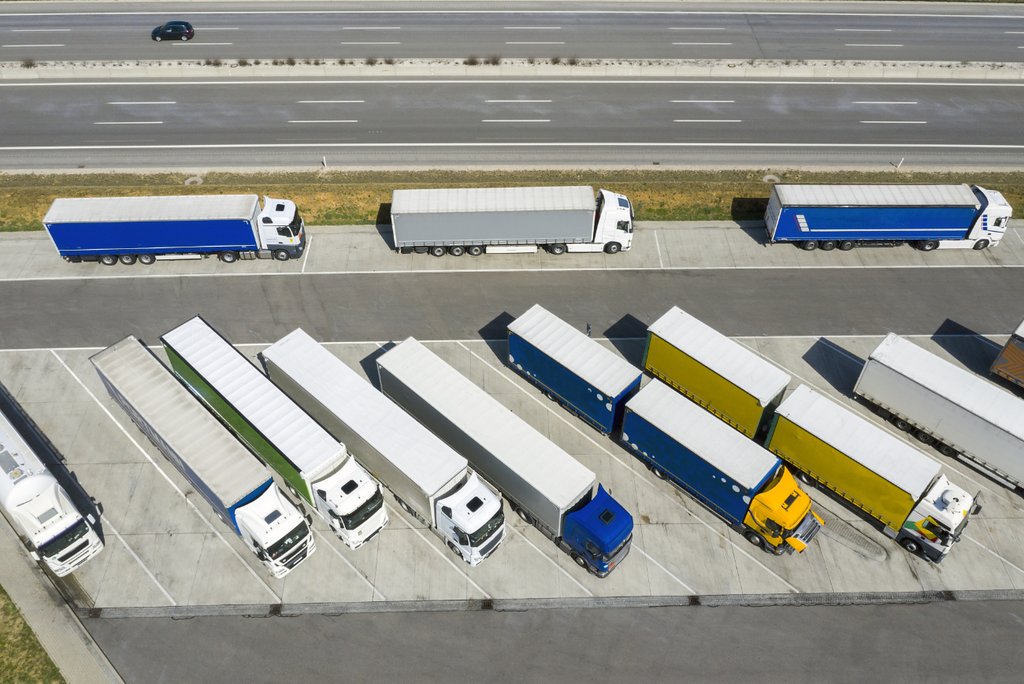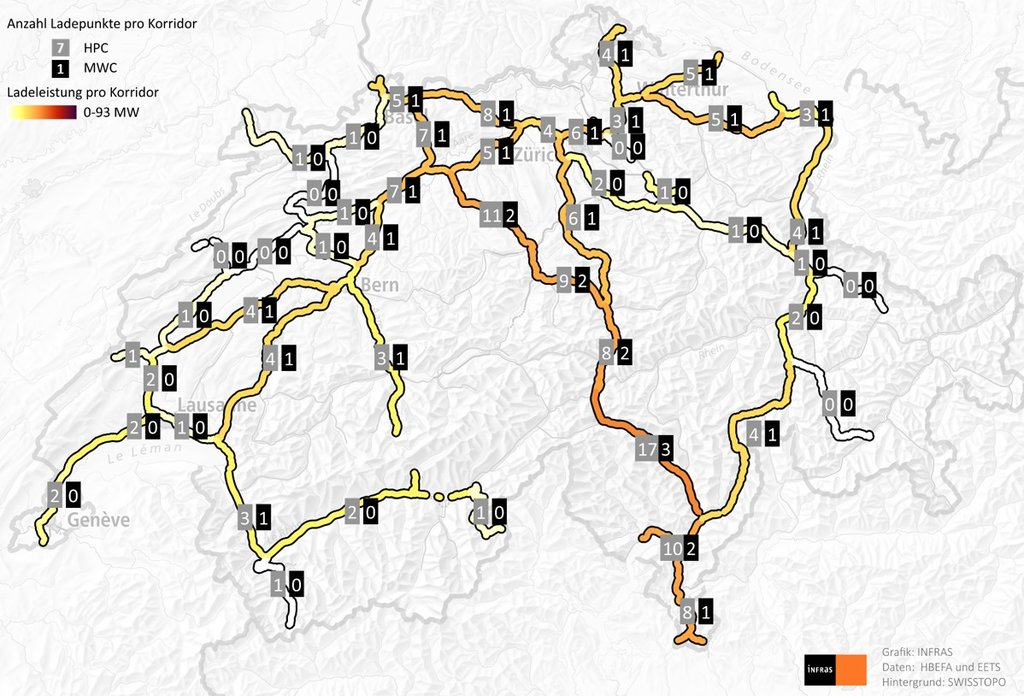Many Swiss companies want to electrify their freight fleets. The challenges include choosing the right fleet composition and charging strategy, and there are several barriers to electrification. With the support of the Swiss government, a consortium including INFRAS has developed a baseline study on the decarbonization of freight transport and an Excel tool to provide concrete decision support for companies.

Electrifying an HDV fleet is a complex task for companies: they need to find the perfect fleet composition and charging strategy for their specific use cases. A research project by INFRAS examined this challenge by developing a decision-making tool for companies as well as national scenarios for the electrification of heavy commercial vehicles.
The project partners were the Paul Scherrer Institute PSI, Swiss Post and Designwerk Technologies. The project was supported by the Mobility Research Program of the Swiss Federal Office of Energy (BSFOE. INFRAS collaborated with major Swiss logistics companies and energy providers to obtain a wide range of representative use cases.
The ten key findings
In addition to Swiss companies, the study also aims to provide policy makers and relevant stakeholders with a basis for decision making in order to promote the electrification of heavy commercial vehicles (HCV). The key findings of the research project are as follows:
- The electrification of freight transport is technically feasible and is progressing.
- However, there are many barriers, including the high cost of purchasing a vehicle and the currently limited availability of public charging infrastructure.
- Planning and investment security for companies would be a key lever for accelerating electrification.
- The majority of approved e-HDVs already have sufficient range for the average daily mileage.
- Large companies in Switzerland are focusing on charging infrastructure at their own sites, often supplemented by "charging communities".
- The charging demand for battery electric HDVs will be about 0.5 TWh in 2030 and 1.9 TWh in 2040. Depending on the scenario, depot charging will cover 70-90% of the domestic fleet's charging needs. Foreign transit vehicles will be 90-100% public charging.
- The e-HDV fast-charging infrastructure along the highways is mainly based on small to medium charging hubs; megawatt charging systems are needed, but only for about 16% of the charging points.
- Battery-powered HDVs have significantly lower greenhouse gas emissions than diesel HDVs, even when manufacturing and disposal are taken into account.
- Battery-powered HDVs often still have (slightly) higher total cost of ownership than diesel HDVs, but they are already economical for certain applications.
- Electrification of large regional distribution centers is feasible in principle by 2030, although the expansion of the necessary grid capacity is a critical factor.

Excel tool as a concrete decision support for companies
One of the challenges companies face when transforming their fleets is a triple trade-off: the need for range, the need for maximum payload, and the need for time to recharge battery-powered heavy-duty vehicles. The goal is to find an optimal fleet transformation strategy that takes into account the specific needs of the company and best resolves this trade-off.
In addition to the baseline study, the research project also provides a parameterized Excel tool for calculating total cost of ownership (TCO) and environmental impact. This tool is available to Swiss companies as a decision-making tool for the electrification of their freight transport fleet.
Electrifying freight transport more complicated than passenger transport
In recent years, electrification has primarily focused on passenger transport, but now freight transport is undergoing a similar transformation, says INFRAS business unit manager Roberto Bianchetti. “However, given the wide range of vehicle types, areas of application and charging capacity requirements, the challenge is significantly more complex for freight transport”, Bianchetti notes. Close cooperation with industry, logistics companies and energy suppliers was therefore essential for the project - and for the electrification of freight transport as a whole.
Further information:
- Final report (in German)
- Excel tool for companies
Project partners
- Background on the SFOE’s mobility research programme
- Paul Scherrer Institute
- Swiss Post
- Designwerk Technologies
INFRAS projects on the topic of electromobility
- INFRAS dossier on "Electromobility" (in German)
- Electric mobility scenarios for heavy goods transport in the HBEFA
Selected INFRAS projects on the topic of freight transport (in German)





